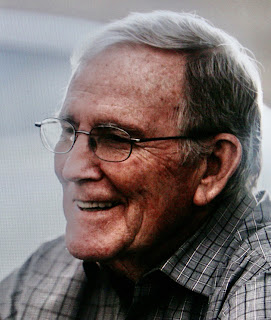The Christmas/New Year season can be lonely for people who “go down memory lane.”
A minister friend told me this: the word “nostalgia” comes from two Greek words that combined mean “the pain of the return.”
“Nostalgia” is “a sentimental longing or wistful affection for the past, typically for a period or place with happy personal associations,” sources say.
Three days before Christmas 2021, I visited my lung doctor’s office in the Prisma Health Greer Memorial Hospital complex for a yearly checkin. A lady ushered me into a room I recognized as the room my late wife, Carol, and I waited in many times while she battled pulmonary hypertension and was Dr. Armin Meyer’s patient.
Memories flooded my mind. Carol and I lived for almost 30 years in North Carolina. In Dec. 2012 a blood clot rose from Carol’s leg and burst in her lungs, causing pulmonary hypertension (that made her heart work hard to pump blood through her lungs). We moved back to the Greenville, SC, area on Jan. 10, 2018. Right after Christmas 2018, Dr. Meyer told Carol her “time had come.” After a few days at the Upstate Community Hospice House, Landrum, SC, Carol died on Jan. 11, 2019 (one year and a day after we moved from NC to SC).
That history flashed through my mind as I sat … with Christmas only days away.
“The holidays magnify feelings of anxiety, depression, and family discord that make holiday gatherings hard,” someone said.
Stress can rise in December, caused by lack of money, shopping decisions and deadlines, strained family relations, pressures to please family and friends, and the media blitz of families enjoying holiday get-togethers.
Writer Ray Williams says, “Some get depressed because Christmas appears to be a trigger to engage in excessive self-reflection and rumination about the inadequacies of life (and a ‘victim’ mentality) in comparison with other people who seem to have more and do more.”
Christmas comes with expectations of perfect, happy families. And we remember loved ones who are not with us any longer. For many, this year marks their first Christmas without a certain loved one.
Some people feel anxious or depressed around winter holidays due to seasonal affective disorder (SAD), sometimes referred to as seasonal depression.
Many folk have experienced loss of a friend or loved one to COVID-19. That disease puts a damper on our getting together with friends and family, where there are possible tensions about COVID vaccinations — strife between the vaxxed and the unvaxxed.
Jesus is still our hope — during any time of the year! Let’s rely on Jesus, no matter what trouble comes.
Here are some verses to encourage us as we enter the new year of 2022:
“Therefore, if anyone is in Christ, he is a new creation. The old has passed away; behold, the new has come” (2 Corinthians 5:17 ESV).
“For I reckon that the sufferings of this present time are not worthy to be compared with the glory which shall be revealed in us” (Romans 8:18).
“Behold, I will do a new thing; now it shall spring forth; shall ye not know it? I will even make a way in the wilderness, and rivers in the desert” (Isaiah 43:19).
“And be renewed in the spirit of your mind” (Ephesians 4:23).
“Blessed be the God and Father of our Lord Jesus Christ! According to his great mercy, he has caused us to be born again to a living hope through the resurrection of Jesus Christ from the dead” (1 Peter 1:3).
“Brethren, I count not myself to have apprehended: but this one thing I do, forgetting those things which are behind, and reaching forth unto those things which are before, I press toward the mark for the prize of the high calling of God in Christ Jesus” (Philippians 3:13-14).







